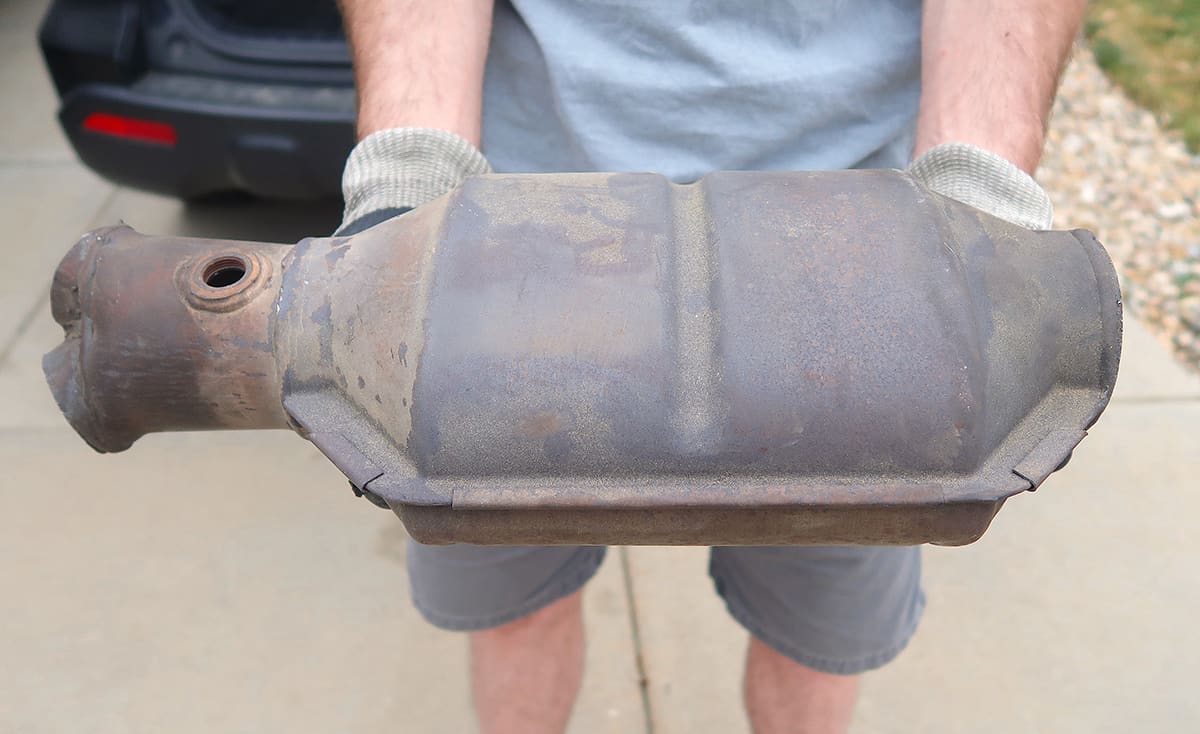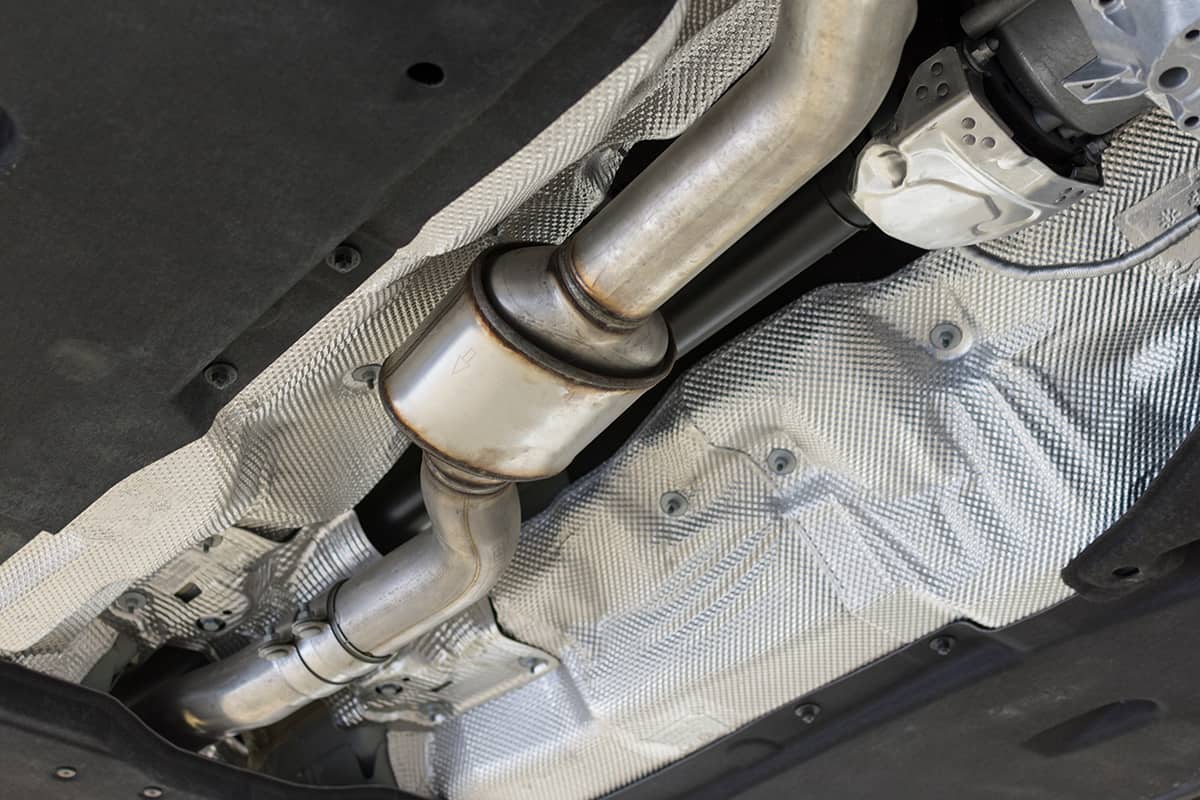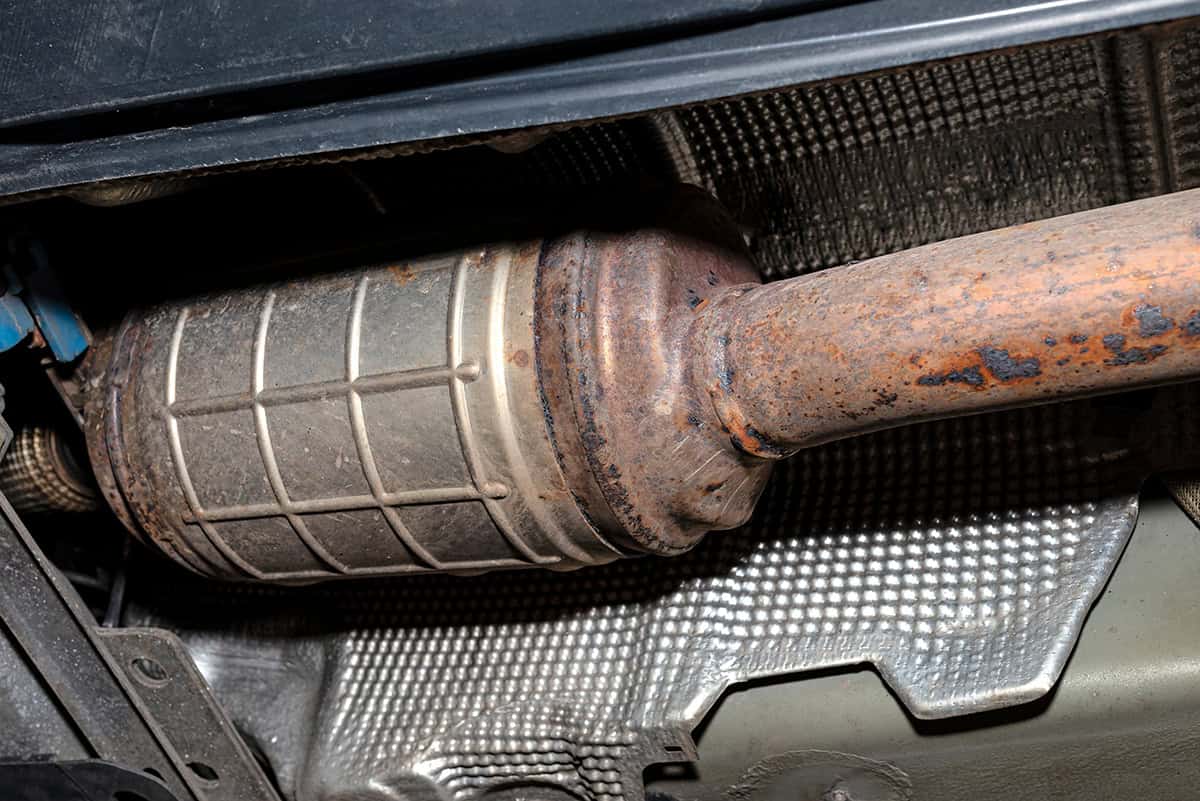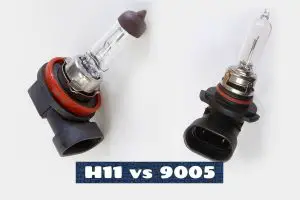The catalytic converter cleans up harmful gases before they leave your exhaust pipe. It’s a crucial part of your car that keeps the air cleaner and helps your car run smoothly. When it goes bad, it can cause a lot of problems, both for your car and for the environment.
The most obvious signs of a bad catalytic converter include:
- Your car doesn’t accelerate like it used to
- You’re using more gas than usual
- The ‘Check Engine light’ on your dashboard is on
- Your car fails an emissions test
This article will delve into what happens when your car’s catalytic converter isn’t working right, why it’s important, and how to deal with it.
The Role of a Catalytic Converter

The catalytic converter’s job is to change harmful gases that your car produces into less harmful substances before they leave your car’s exhaust pipe.
How a catalytic converter functions
When the exhaust gases from your engine pass through the converter, the catalysts trigger chemical reactions. These reactions change harmful gases into safer ones. Carbon monoxide (a poisonous gas) is changed into carbon dioxide.
Contribution to emission control
Catalytic converters are crucial for meeting environmental standards. They dramatically reduce the emissions of harmful gases. In fact, they can eliminate more than 90% of the harmful emissions from gasoline engines. This is why every gasoline car built since the mid-1970s has a catalytic converter.
However, catalytic converters can only do their job if the engine is running properly. If the engine sends too much or too little air and fuel into the converter, or if the exhaust gases are too hot, the converter can’t change the gases as it should.
Identifying a Bad Catalytic Converter
Some signs that your catalytic converter might be having problems are pretty straightforward.
1. Acceleration issues
Your car may not accelerate as it usually does. It may exhibit decreased performance and struggle to gain speed.
2. Increased fuel consumption
You might notice that your car is using more gas than normal. Fuel efficiency may decrease, leading to frequent refueling.
3. Rattling Sound
A noticeable rattling sound may emanate from under your car. This sound could indicate internal damage or breakage within the catalytic converter, causing loose pieces to rattle.
4. Check Engine light activation
The ‘Check Engine’ light on your dashboard might illuminate. While this light can indicate various issues, one possibility is a problem with the catalytic converter, as detected by your car’s computer.
5. Failed emissions test
If your car fails an emissions test, it could signal a malfunction in the catalytic converter. The test measures the level of pollution your car emits, and a faulty converter can lead to excessive emissions.
Causes of Catalytic Converter Failure

Various things can cause a catalytic converter to fail.
1. Contaminants in fuel and their effect
This can include oil, antifreeze, or even some types of fuel additives. These substances can coat the inside of the converter and prevent it from working properly.
Also, using the wrong type of fuel can cause problems. For example, a car that is designed to use unleaded gasoline can have its catalytic converter damaged if leaded gasoline is used.
2. Engine issues leading to converter damage
If the engine is burning too much oil, the excess oil can clog up the converter. Or if the engine isn’t mixing the air and fuel properly, it can cause the converter to overheat and become damaged.
An engine that misfires (doesn’t fire the spark plugs at the right time) can send unburned fuel into the catalytic converter. This can make the converter get so hot that it starts to melt inside.
3. Wear and tear
Finally, like all parts of a car, catalytic converters can wear out over time. The constant heating and cooling can cause cracks to form. Or the catalyst materials can wear away. However, a well-maintained catalytic converter should last a long time, often as long as the car itself.
Repairing or Replacing a Bad Catalytic Converter
Sometimes, a small fix can do the job. But in other cases, you might need to replace the whole thing.
Is It Possible to Repair a Catalytic Converter?
A catalytic converter might seem like it’s not working when really, it’s just dirty or clogged. In these cases, it can sometimes be cleaned. This is similar to how a dirty window can be cleaned instead of being replaced.
There are special cleaners, like AUTOPROFI OXICAT Catalytic Converter Cleaner, that you can add to your gas tank. These cleaners can help remove some of the dirt and contaminants that can build up in the converter.
However, cleaning won’t always fix the problem. If the converter is damaged or worn out, it will likely need to be replaced. If it’s like a window that’s shattered instead of just dirty, cleaning won’t help.
When to replace a catalytic converter
There are several signs that your catalytic converter may need to be replaced. These include a significant loss of engine power, poor fuel economy, and an increase in exhaust emissions. If you’re experiencing these symptoms and your mechanic confirms that the catalytic converter is the problem, then it’s time to get it replaced.
Also, if your ‘Check Engine’ light comes on and a mechanic’s scan tool shows a code related to the catalytic converter, this is a strong sign that the converter might need to be replaced.
The replacement process
Replacing a catalytic converter is a job for a professional mechanic. The converter is part of the exhaust system, which can get extremely hot, and it’s often difficult to reach. It’s not a job you’d want to try at home.
- The mechanic will confirm that the catalytic converter is the problem. They’ll do this by checking the ‘Check Engine’ light code, inspecting the exhaust system, and possibly performing other tests.
- Once they’re sure the converter is the problem, they’ll order a new one. Using the wrong one can cause the ‘Check Engine’ light to come back on or even damage the engine.
- They’ll remove the old converter. This can be a tough job because the bolts that hold it in place can get rusted and hard to remove.
- They’ll install the new converter and make sure everything is secure. Then they’ll start the car and check the exhaust system to make sure everything is working right.
FAQs
1. What happens if I ignore a bad catalytic converter?
It can start to run poorly, with reduced power, sluggishness, and bad fuel efficiency. Most importantly, a bad catalytic converter can cause your car to produce more harmful gases, which is bad for the environment and might even cause your car to fail an emissions test.
2. Can a catalytic converter be cleaned instead of replaced?
Cleaning a catalytic converter can sometimes help, but it’s not always the best solution. Over time, the inside of the converter can get clogged with unburned fuel and other stuff, and cleaning can remove some of this.
But in many cases, the converter is damaged in a way that cleaning can’t fix. It’s kind of like trying to fix a broken window by washing it; if it’s just dirty, washing helps, but if it’s shattered, you need to replace it.
3. What’s the average lifespan of a catalytic converter?
On average, a catalytic converter should last around 10 years, but sometimes, it’s limited to only around 100,000 miles. This is just an average, though. Some might last longer, and some might not last as long. It depends on things like how the car is driven and maintained, the type of fuel used, and the general condition of the car’s engine.






